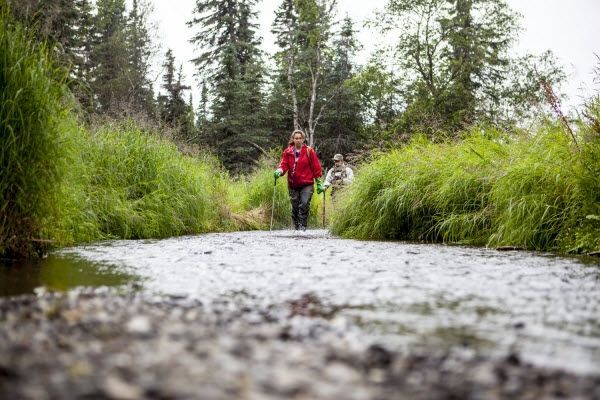Hansen Creek, a small stream in southwest Alaska, is hard to pick out on a map. It’s just over a mile long and about 4 inches deep. Crossing from one bank to the other takes about five big steps.
Yet this stream is home to one of the most dense sockeye salmon runs in Alaska’s Bristol Bay region. Each summer, about 11,000 fish on average return to this stream, furiously beating their way up the shallow creek to spawn and eventually die.
For the past 20 years, dozens of University of Washington researchers have walked this creek every day during spawning season, counting live salmon and recording information about the fish that died — for a salmon, death is inevitable here, either after spawning or in the paws of a brown bear. After counting a dead fish, researchers throw it on shore to remove the carcass and not double-count it the next day. The data collection is part of a long-term study looking at how bear predation affects sockeye salmon in this region.
Continue reading at University of Washington
Image via Dennis Wise, University of Washington


